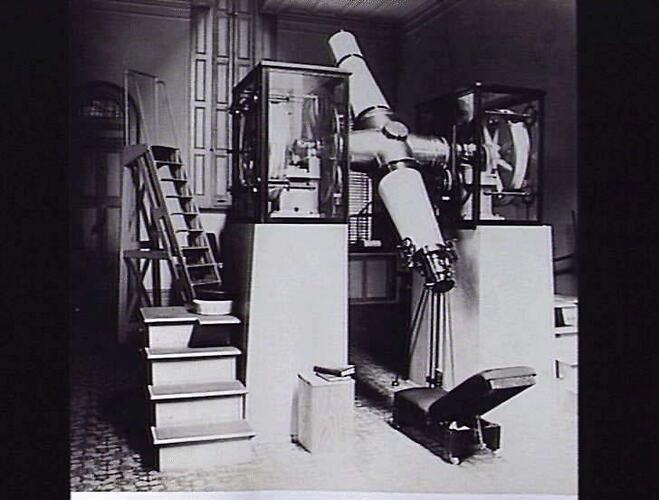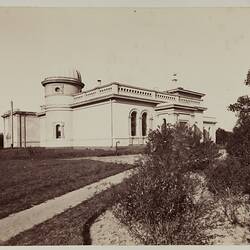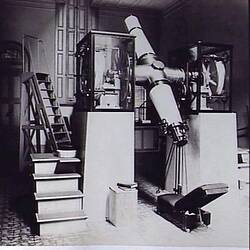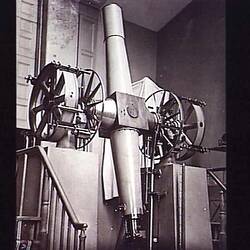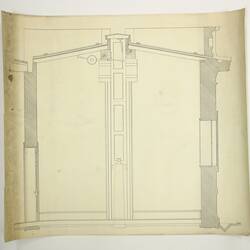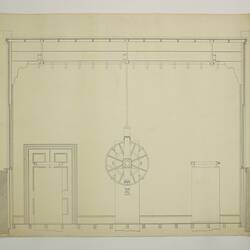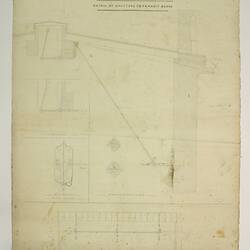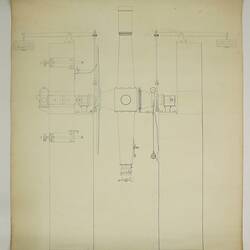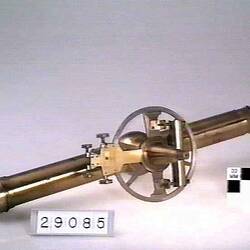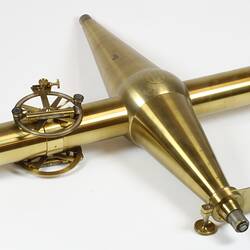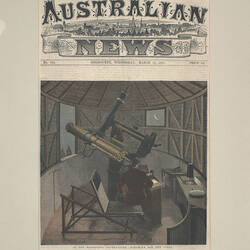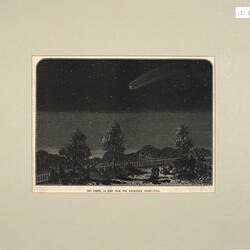Along with the observations required for timekeeping, positional astronomy occupied the largest part of the Observatory's work. Positional astronomy consisted of the accurate and repeated observations of stars, and then the reduction of the observations to provide a precise location of the star in the sky and its magnitude. When the Melbourne Observatory commenced, this involved the use of the transit telescope and accompanying equipment to fix the location. By the 1880s celestial photography had improved so that it was possible to take series of photos of the sky, then measure the position and magnitude of stars on the photographic plates.
The work of the Melbourne Observatory was of particular importance because it was one of the best equipped observatories in the southern hemisphere, and thus able to observe stars that could not be seen from the European and North American observatories.
In the early years Melbourne Observatory became involved in several international projects. In 1863 Government Astronomer Robert Ellery took observations of the parallax of Mars in conjunction with Greenwich Observatory near London and Pulkowa Observatory in St Petersburg; this was to provide measurements that would aid the calculation of the distance of the Earth from the Sun. The following year, in collaboration with Greenwich Observatory, the Observatory was making observations of the polar distances of stars, to measure the amount of apparent displacement due to the refraction of the Earth's atmosphere. Prior to the Transit of Venus in 1874, the Observatory made large numbers of transit observations of stars that would be used by expeditions from the northern hemisphere observatories to locate the precise position of their field observatories.
Several projects were aimed at measuring as accurately as possible the distances between the planets and the Sun, and therefore understanding the mechanics of the solar system. For example, in 1931 the Observatory used its astrographic telescope to photograph the passage of the minor planet Eros; the photographic plates were sent to Greenwich where astronomer Spencer Jones used them with those from other observatories to more accurately measure solar parallax. His work would not be improved upon until the advent of radio astronomy after the Second World War permitted radar measurements of the distance between Earth and Venus.
More Information
-
Keywords
-
Authors
-
Article types
